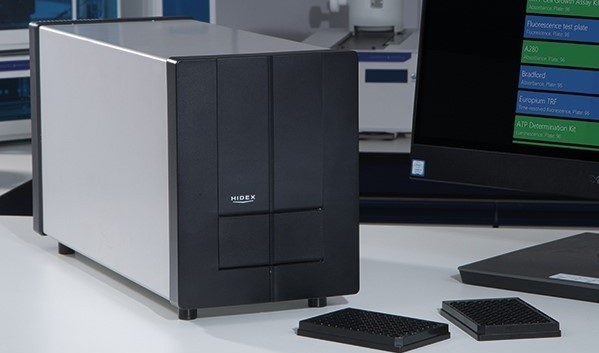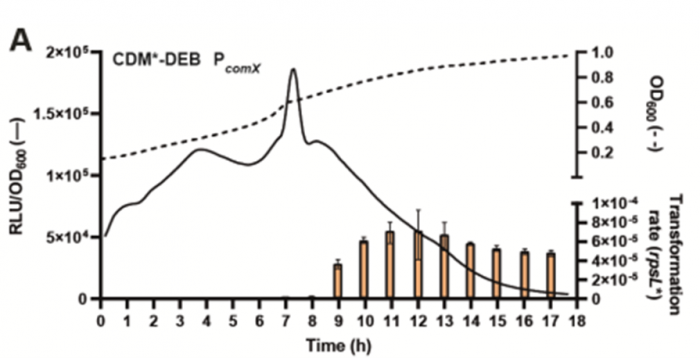Using the Hidex Sense to unveil the regulatory network controlling natural transformation in lactococci
18/04/2024

The microplate reader has been used to investigate the role of a glucose-maltose diauxic shift on the spontaneous competence of Lactococcus lactis
In a study by Frédéric Toussaint et al. at the Louvain Institute of Biomolecular Science in conjunction with IFF Health & Biosciences, the Hidex Sense multimode compact plate reader has been used to identify the physiological conditions that activate competence for DNA transformation in Lactococcus lactis, the most important lactococcal species.
Natural transformation in Lactococcus lactis requires the activation of the master regulator ComX. However, the growth conditions that lead to spontaneous transformation, as well as the regulators that control ComX production, are unknown. Toussaint et al. identified that a carbon source, nitrogen supply, and pH are all key factors controlling competence development in Lactococcus lactis.
Investigating diauxic growth through the ComX regulator
Diauxic growth is characterised by growth in two phases, and is caused by the presence of two sugars, one of which is easier for the target bacterium to metabolise. The preferred sugar is consumed first, which leads to rapid growth, followed by a lag phase. During the lag phase the cellular machinery used to metabolise the second sugar is activated and subsequently the second sugar is metabolised.
To investigate the role of a glucose-maltose diauxic shift on spontaneous competence of Lactococcus lactis, Toussaint et al. monitored the expression of ComX. For this purpose, a luminescence reporter system was designed by cloning the luciferase genes luxAB under the control of the ComX promoter (PcomX) in a low-copy number plasmid. The Hidex Sense microplate reader was used to monitor the expression of the ComX gene through luminescence. Growth (OD600) and luciferase activity were monitored at 5-minute intervals on the reader for a maximum of 24 hours.

Timing of transformation rate (orange bars) during cell growth (dotted line; OD600) and kinetics of PcomX specific luciferase activity (solid line; RLU/OD600) in CDM*-DEB. Bars show mean values of technical triplicates ± standard deviations.
The study showed that ComX expression was boosted after seven hours of culture, which corresponds to the diauxic shift between glucose starvation and a second growth linked to maltose consumption. Together, these results show that a sugar diauxic shift activates ComX expression at the transcriptional level. They also suggest that CcpA directly represses PcomX in glucose conditions, a repression effect that is potentially released on alternative carbon sources such as maltose.
Find out more
To read the full research paper from Toussaint et al., click here. You can learn more about the Hidex Sense by clicking the button below to speak to a product specialist directly.